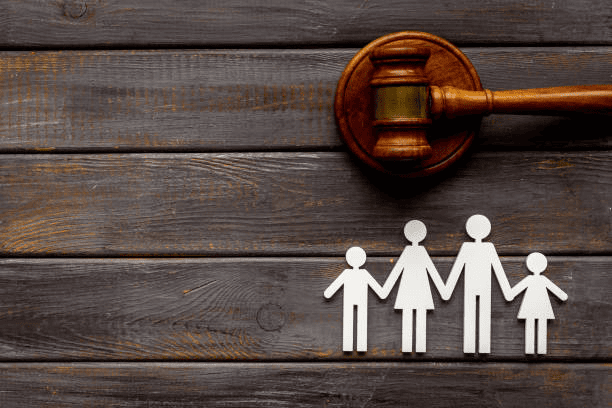This article will provide you with a checklist of everything you need to know about the 70/30 divorce settlement Australia. A 70/30 divorce or property settlement simply refers to the situation where one party gets 70% of the property pool and the other gets 30% of the property pool. Read more about 70/30 split here.
In the country, divorce, while increasingly common, can be a tumultuous and emotionally charged experience. One of the most challenging aspects of the process is reaching a property settlement that fairly and equitably divides assets and liabilities.
This checklist equips you with the essential knowledge and understanding to navigate the intricacies of divorce settlements in Australia.
70/30 Divorce Settlement Australia: The Basics
- No-fault divorce. Unlike many other countries, Australia operates under a “no-fault” divorce system. This means you don’t need to prove your spouse’s wrongdoing to obtain a divorce. You simply need to demonstrate that you’ve been separated for at least 12 months.
- Division of property and assets. Australian law dictates that marital assets and liabilities acquired during the marriage are generally divided equally, regardless of whose name they are under. This includes everything from the family home and vehicles to bank accounts, investments, and superannuation.
Key Aspects of 70/30 Divorce Settlement Australia
- You must have a formal agreement. The final division of assets and liabilities is documented in a formal agreement, often referred to as a “consent order” or “binding financial agreement.” These agreements are legally binding and outlines the specific terms of property settlements.
- Undergo negotiation and mediation. In most cases, couples will attempt to reach a 70/30 divorce settlement Australia through negotiation or mediation. These processes involve open communication and compromise to reach an agreement that works for both parties.
- Seek legal representation. While legal representation is not mandatory, it is highly advisable to seek the counsel of an experienced family lawyer, especially if the financial situation is complex or there are disagreements about the settlement.
70/30 Divorce Settlement Australia: Legal Basis
The Family Law Act 1975 doesn’t explicitly mention or endorse 70/30 divorce settlement Australia. The legal basis for property division after separation under the Act, specifically section 79, mandates a just and equitable distribution of the “property pool”.
Instead of fixed percentages, the law focuses on assessing individual circumstances through several key factors outlined in section 75(2):
- Financial contributions. This includes both monetary and non-financial contributions, like childcare or managing the home, made by each spouse during the relationship.
- Future needs. The family court considers each spouse’s age, health, income-earning capacity, and any anticipated financial requirements, especially for those caring for children.
- Pre-existing assets and liabilities. Financial assets and debts each spouse owned before the relationship are generally excluded from the property pool.
- Length of the relationship. Longer relationships may have more complex contributions and future needs, influencing the distribution.
- Standard of living during the relationship. The court aims to maintain a similar standard of living for both spouses after the separation, considering what they enjoyed during the marriage.
- Fault of either party. If one spouse’s actions significantly contributed to the breakdown, the court may adjust the division accordingly, though “no-fault” divorces are common in Australia.
Ultimately, the court exercises judicial discretion based on these factors to determine the fairest way to split the property pool. While a 70/30 divorce settlement Australia is mathematically possible, it’s considered significant and requires strong justification through the factors.

Divorce Settlement Australia: Documents Checklist
To stay organised during the entire process, we recommend that you prepare and keep extra copies of the following documents:
- Essential Documents:
- Marriage certificate
- Birth certificates for any children
- Passports
- Bank statements (all accounts, including joint and individual)
- Superannuation statements for both parties
- Payslips and tax returns for the past few years
- Property titles and mortgage documents
- Insurance policies (life, health, car)
- Loan statements for any other debts
- Wills and powers of attorney
- Additional Documents:
- Business records (if applicable)
- Investment statements
- Receipts for large purchases
- Evidence of pre-existing assets
- Any agreements or contracts related to finances
- Financial Planning:
- Open your bank account if you don’t already have one.
- Review your income and expenses to create a budget.
- Update your insurance policies and beneficiaries.
- Research government benefits you may be eligible for.
Divorce Settlement Australia: Moving Forward
How do you move forward from this big change? Ending a marriage in Australia, while understandably difficult, also marks the beginning of a new chapter. Moving forward after divorce requires acknowledging emotions, taking practical steps, and seeking support where needed.
1. Process Your Emotions.
Divorce is a significant life change, and emotions like grief, anger, and confusion are completely normal. Allow yourself to experience and express these emotions in healthy ways, such as journaling, talking to a therapist, or connecting with supportive friends and family.
During this emotionally demanding time, prioritising your well-being is vital. Engage in activities that nourish your mind, body, and soul, such as exercise, spending time in nature, or pursuing hobbies.
2. Take Practical Steps.
Consult with a family lawyer specialising in divorce to understand your legal rights and responsibilities regarding financial settlements, child custody arrangements, and property division.
Furthermore, you have to decide on living arrangements, whether staying in your current home, finding new accommodation, or negotiating shared custody arrangements.
3. Build a Support System
Surround yourself with friends, family, and loved ones who offer emotional support and understanding. Join support groups or online communities specifically for navigating divorce in Australia.
If needed, consider therapy to work through emotional challenges and develop coping mechanisms. Therapists can also help you communicate effectively with your ex-partner, especially if children are involved.
4. Focusing on Personal Growth.
Finally, set new goals. Look ahead and set goals for the future. This could involve career aspirations, travel plans, personal development initiatives, or simply focusing on creating a happier and healthier life for yourself.
Remember, this is a general checklist, and your specific needs may require additional steps or financial resources. Adapting and tailoring it to your unique situation is necessary. Stay informed, prioritise your well-being, and seek professional guidance when needed.

Get Expert Guidance from JB Solicitors
To ensure a smooth and successful process, seek legal advice from family lawyers at JB Solicitors. You can trust our experienced solicitors in getting the divorce settlement you deserve. Let us help you secure your rights and prevent complications.
Get legal advice now for your divorce settlements.
